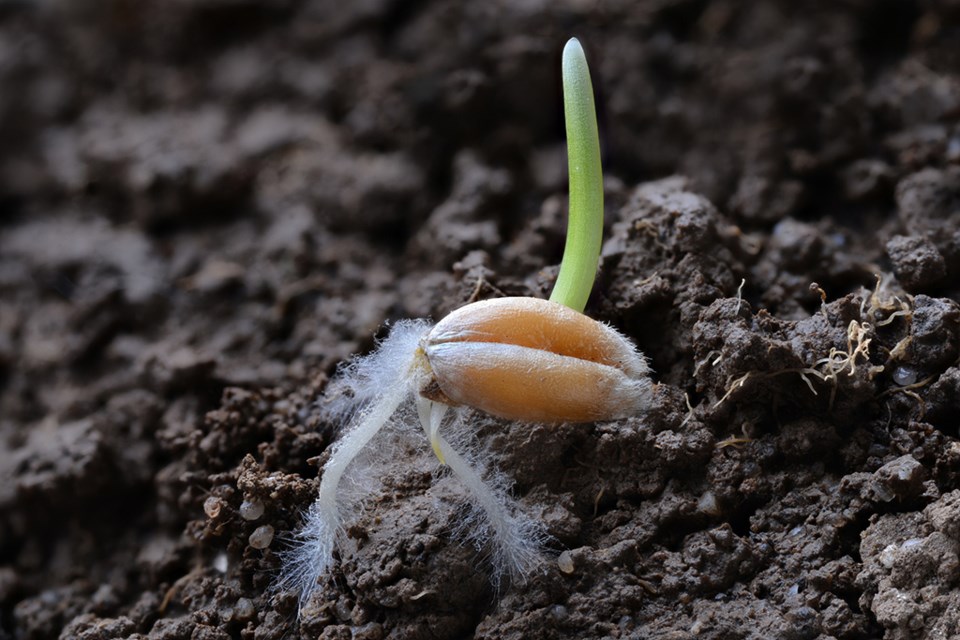NORTHEASTERN SASKATCHEWAN CROP REGION — Fields in the Northeastern Saskatchewan Drop Region are still quite wet, but warmer weather during the week allowed for some seeding progress. Sixty per cent of the crop is now seeded up from 22 per cent last week but well behind the five-year average (2017-2021) of 82 per cent for this time of year. Most areas of the region are reported to be about a week from completing their seeding operations, if no more rain is received.
Within the region 94 per cent of the field pea acres, 79 per cent of the flax, 77 per cent of the spring wheat, 63 per cent of the barley, 52 per cent of the oats and 49 per cent of the canola has been seeded to date.
The Humboldt, Lake Lenore and Arborfield areas all received 32 mm over the past week, with the Kinistino area receiving 18 mm and the Hudson Bay area 14 mm. There are many reports of standing water in fields and there will be many acres that go unseeded due to excess moisture across the region.
Soil moisture conditions are very good following weeks of rain. Cropland topsoil moisture is rated as 17 per cent surplus, 81 per cent adequate and two per cent short. Hay and pasture land topsoil moisture is rated as 15 per cent surplus, 82 per cent adequate and three per cent short.
Most crops are in good or fair condition in the northeast region however in many parts of the region crops have been slow to emerge due to oversaturated fields, this may lead to seedling death and with time С����Ƶ short producers may not have time to reseed. Most of the damage this week was caused from flooding, wind and the first emerging flea beetles.
Provincial Overview
Producers in the west are nearly wrapped up with seeding while many in the east are still behind due to rain delays and extremely wet fields.
Currently, 76 per cent of the crop acres in the province have been seeded, up from 52 per cent last week but still well behind the five-year average (2017-2021) of 93 per cent. Producers in the southeast and east central regions have reported that many low laying areas will go unseeded this year due to standing water.
Ninety-seven per cent of the crop is seeded in the southwest, 95 per cent in the west-central, 93 per cent in the northwest, 64 per cent per cent in the southeast, 60 per cent in the northeast and 50 per cent in the east-central region.
Provincially, 96 per cent of lentils and chickpeas, 93 per cent of field peas, 91 per cent of durum, 79 per cent of canary seed, 75 per cent of spring wheat, 69 per cent of barley, 66 per cent of canola, 65 per cent of flax and 51 per cent of oats have been seeded to date.
A large weather system covered much of the eastern part of the province this past week, resulting in significant amounts of rain for those regions. The Moosomin area received 92 mm, the Stoughton area 89 mm, the Bienfait area 65 mm and the Esterhazy area 42 mm. The west received some rain over the past week, but amounts were small, ranging from three mm to 12 mm.
Cropland topsoil moisture is rated as 16 per cent surplus, 56 per cent adequate, 19 per cent short and nine per cent very short. Hay and pasture land topsoil moisture is rated as seven per cent surplus, 60 per cent adequate, 19 per cent short and 14 per cent very short. Western regions are least favourable for moisture while more favourable conditions are reported in the east.
Crop conditions this week range from good to fair across the province. Emergence has been reported to be slow in areas of the southwest and west-central where moisture is lacking. In the southeast and east-central, however, emergence has been slow due to cool weather and an overabundance of moisture. Most crop damage this week was from flooding, drought, flea beetles and gophers.
Now that seeding has wrapped up for many producers, they are busying spraying in-crop herbicides, assessing germination and emergence, scouting for early season pests and moving cattle to pasture.





